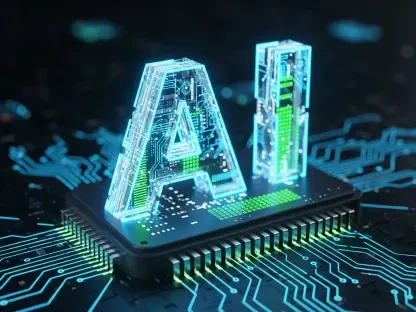Vibe coding is rapidly revolutionizing the programming landscape by leveraging artificial intelligence to generate code based on natural language descriptions. Introduced by Andrej Karpathy in recent years, this innovative approach makes programming more accessible and intuitive. By enabling users to simply describe their desired outcomes, AI models can then generate the corresponding code, transforming the traditional coding experience. This new wave in software development holds the potential to democratize programming, speed up development processes, and boost both productivity and creativity among developers.
The Emergence of Vibe Coding
Andrej Karpathy and the Genesis of Vibe Coding
The concept of vibe coding emerged from the innovative mind of Andrej Karpathy, co-founder of OpenAI and former AI leader at Tesla, who introduced this groundbreaking approach in 2025. Karpathy’s vision to “fully give in to the vibes” represented a significant departure from traditional coding paradigms. Unlike conventional programming, which requires strict adherence to syntax and detailed code writing, vibe coding embraces a conversational style where AI handles the more technical aspects. By allowing users to input high-level instructions in natural language, this new method simplifies the coding process substantially.
Karpathy’s introduction of vibe coding marks a pivotal moment in the field of programming. This shift highlights the intersection between AI and human creativity, liberating developers from the intricacies of syntax and error debugging. Vibe coding relies on sophisticated AI models trained on vast datasets that include both natural language and code, enabling these models to understand and generate accurate code snippets. This innovation promises to transform how individuals approach software development, unleashing new possibilities for those without traditional coding skills.
Breaking Away from Traditional Syntax
Traditional coding methods often require years of study and practice to master the syntax and intricacies of various programming languages. Vibe coding, however, breaks from these rigid rules by adopting a more intuitive and user-friendly approach. Users can describe their objectives in plain language, and the AI interprets these descriptions to generate functional code. By removing the barriers of technical jargon and complex syntax, vibe coding opens the door to a broader audience.
This conversational approach to coding significantly lowers the entry threshold for programming. People who have innovative ideas but lack formal training in computer science can now bring their projects to life. Vibe coding serves as a bridge, translating human intent into executable programs. For seasoned developers, this technology allows them to focus on more complex and creative components of their projects, reducing the time spent on routine tasks and syntax corrections. This accessible and streamlined methodology represents a dramatic shift in the programming world.
Benefits of Vibe Coding
Speed and Accessibility
One of the most compelling advantages of vibe coding is its remarkable speed. Compared to traditional coding methods, which can be slow and time-consuming, vibe coding accelerates the development process. By leveraging AI’s ability to handle repetitive tasks and code generation, users can produce functional websites, applications, and scripts in a fraction of the time. This increased development speed is particularly beneficial in a fast-paced digital economy where quick iterations can be crucial for success.
Vibe coding not only speeds up development but also democratizes programming by making it accessible to a wider audience. Individuals with minimal coding experience or those who may find traditional coding intimidating can now engage in software development. This inclusivity could spark a new wave of innovation as diverse ideas and perspectives are more easily translated into digital products. The barrier to entry is significantly lowered, allowing people from various backgrounds to contribute to technological advancements.
Boosting Creativity and Productivity
For experienced developers, vibe coding offers substantial benefits by freeing them from mundane and routine tasks. AI-powered coding allows them to offload repetitive work, enabling them to concentrate on more creative and complex aspects of their projects. This shift in focus can lead to higher productivity and more innovative solutions, as developers are less bogged down by syntax issues and debugging.
Moreover, by minimizing time spent on error correction and other basic coding tasks, developers can explore new avenues and experiment with advanced features that were previously too time-consuming. The synergy between human creativity and AI’s technical prowess enhances both the quality and scope of software projects. Vibe coding, therefore, represents not just a tool for speeding up development but a catalyst for innovation and enhanced productivity in the programming arena.
Real-World Applications
Web and Mobile Development
Vibe coding has found fertile ground in the areas of web and mobile development, significantly expediting the creation of both front-end and back-end code. By utilizing simple language inputs, developers can quickly build and deploy functional and visually appealing websites. The AI manages the translation of these high-level instructions into detailed code, streamlining tasks that would traditionally require intensive manual coding.
In addition to web development, mobile app creation also greatly benefits from vibe coding. The process of developing mobile applications, which typically involves various layers of coding for different operating systems and devices, becomes more manageable and faster. With vibe coding, the AI can generate the necessary code snippets and handle compatibility issues, allowing developers to focus on designing user experiences and adding unique features. This use of vibe coding in web and mobile development showcases its potential to redefine efficiency and accessibility within these prevalent fields.
Diverse Industry Implementations
Beyond web and mobile development, vibe coding is making inroads into various other industries:
In data science, for instance, vibe coding assists professionals in developing complex algorithms, cleaning and analyzing vast datasets, and generating visualizations. The AI helps streamline these processes, enabling quicker insights and more efficient data management.
Game development is another area where vibe coding has shown promise. Game designers can leverage AI to write scripts, optimize performance, and debug gameplay mechanics. This capability allows them to focus on creating engaging storylines and immersive experiences without getting entangled in detailed coding tasks.
DevOps engineers benefit from AI’s ability to automate infrastructure setup, craft deployment scripts, and manage cloud resources efficiently. This automation reduces manual intervention, improves consistency, and speeds up the continuous integration and delivery process.
In financial technology, vibe coding is utilized to develop secure transaction systems, real-time fraud detection mechanisms, and automated trading solutions. The precision and speed offered by AI enhance the reliability and efficiency of financial operations.
Healthcare technology firms employ vibe coding to create diagnostic tools and automate patient data management processes. These applications can improve healthcare delivery by making systems more responsive and reducing human error.
Limitations and Challenges
Control and Security Concerns
Despite its many advantages, vibe coding is not without its limitations. One of the primary concerns is the potential lack of control over complex projects. While AI can handle many aspects of code generation, it might struggle with the nuances and detailed requirements of intricate systems. Skilled developers often need to fine-tune and thoroughly understand code to ensure it operates as intended and integrates seamlessly with existing frameworks.
Security is another significant concern with AI-generated code. The automated nature of vibe coding could potentially overlook subtle vulnerabilities or introduce unforeseen exploits. Thorough review and testing are crucial to mitigate these risks. Security audits and regular checks must be an integral part of the development process to ensure that AI-generated code meets industry standards and complies with best practices.
Suitability for Complex Projects
Certain projects require levels of detail and precision that may be difficult for AI to achieve without significant human oversight. Complex systems often depend on a developer’s deep understanding of the application context, something AI currently cannot fully replicate. Projects involving highly specialized or proprietary technologies might be better served through traditional programming methods where experts can leverage their extensive knowledge and experience.
While vibe coding significantly lowers the barrier to entry and speeds up development, it is not a one-size-fits-all solution. For tasks that demand intricate, customized code or have stringent security requirements, traditional coding remains essential. The blend of AI assistance and human expertise should be strategically optimized to suit each project’s unique demands, ensuring both efficiency and reliability in software development.
Tools and Platforms for Vibe Coding
Emerging AI Tools
Several AI tools and platforms have emerged to support the vibe coding movement, each contributing uniquely to this burgeoning field:
ChatGPT, developed by OpenAI, is a popular tool that translates plain English prompts into code, making it easier for users to interact with the AI and receive precise outputs. Additionally, GitHub Copilot acts as a virtual AI pair-programmer, offering real-time coding suggestions within various editors, thereby enhancing the efficiency of both novice and experienced developers.
Replit Ghostwriter integrates AI capabilities into Replit’s online coding platform, assisting users by writing and correcting code in real-time. This tool is particularly beneficial for collaborative coding projects and educational purposes. Other notable tools include Cursor and Claude. Cursor’s AI-powered code editor facilitates interactive code generation through chat, while Claude, developed by Anthropic, processes extensive text and code to aid in more complex coding tasks.
Future of Vibe Coding Tools
The future of vibe coding tools looks promising with continuous advancements in AI technology. Platforms like Windsurf, Loveable, and Bolt are set to push the boundaries of what can be achieved in AI-powered programming. These tools promise enhanced functionalities, such as improved contextual understanding and more sophisticated code generation capabilities.
Trained on ever-expanding datasets, future AI coding assistants may become industry-specific, providing tailored solutions that cater precisely to the needs of different sectors. Enhanced collaboration features are also on the horizon, which will foster better integration between human teams and AI, leading to seamless workflows. As AI’s understanding of complex codebases deepens, wholly new programming paradigms are expected to emerge, blending creativity and technical prowess in unprecedented ways.
The constant evolution of these tools highlights the dynamic nature of vibe coding, suggesting a future where the synergy between human intelligence and AI leads to groundbreaking innovations. The continued refinement and expansion of AI capabilities will likely redefine the boundaries of software development.
Conclusion
Vibe coding is swiftly transforming the programming landscape by harnessing artificial intelligence to create code from natural language descriptions. Pioneered by Andrej Karpathy in recent years, this cutting-edge approach makes programming more user-friendly and intuitive. By allowing users to simply articulate their desired outcomes, AI models can then generate the corresponding code, revolutionizing the traditional programming experience. This progressive trend in software development has the potential to make coding more democratic, accelerate development timelines, and enhance both productivity and creativity among developers. The ability to turn simple language into operational code not only broadens access to programming for those with less technical expertise but also frees seasoned developers to focus on more complex and innovative tasks. As AI continues to evolve, the impact of vibe coding on the technology industry promises to be profound, shaping the future of how software is designed, developed, and deployed.








